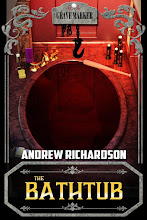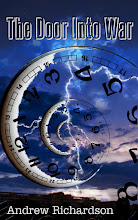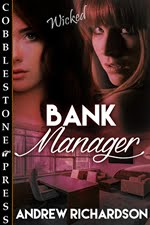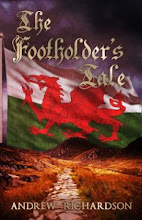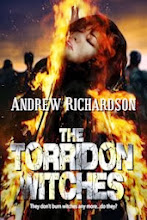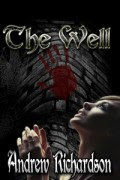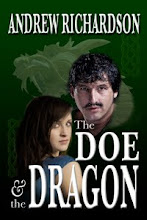Thursday 10 December 2015
'Operation Trench' - Publisher
Saturday 31 October 2015
An Update
- ‘Snuff’ (violent horror) and ‘The Footholder’s Tale’ (historical fantasy) were both published earlier this year. The two reviews ‘Footy’ has received on Amazon are both very positive;
- ‘Eton Mess’ (erotic novelette), ‘Dana’s Children’ (horror) and ‘Operation Trench’ (World War One/time travel/science fiction) are all accepted and in various stages of the publication process. I don’t have release dates yet, although the publisher has provisionally pencilled ‘Trench’ in for sometime in 2016;
- The current work in progress: ‘The Man who Married a Fairy’ (working title) is a retelling of a traditional north Welsh story about Pelling, a mortal who married a fairy maiden. It’s great fun to write because I’ve deliberately set it in 547 so I can include some dramatic events/stories of Maelgwn, colourful King of Gwynedd who died in that year.
- ‘The Fairy Path’ is the tentative next horror novel I’m planning at the moment. In remote Ireland it was believed until recent times that supernatural beings travelled in straight lines between ancient sites, and woe betide any mortals who built a house on a ‘Fairy Path’…
- A horror novel is currently going through Critters, and another is with a publisher for consideration. Fingers crossed.
Saturday 5 September 2015
Character Interview - Shauna Hegarty
Shauna Hegarty is a fictional archaeologist at an equally fictional university. We sent a reporter round to her Dublin flat for an ‘interview’.
I arrive at Shauna Hegarty’s flat with notebook and tape recorder clasped in my right hand, thinking myself lucky to grab the first interview with Scotland’s up-and-coming television presenter.
“Come in,” Shauna says with a smile when she opens the door. After handshakes and introductions she waves me toward a settee. Her grin is genuine and there is a girl-next-door informality in her manner. In fact, she seems ordinary in every way apart from her striking black haired, green-eyed beauty – she looks gorgeous even in her casual navy sweatshirt and jeans. And, unusually, her flat is clean and tidy!
She hands me a coffee and wraps both hands around her own drink as she settles into an armchair opposite me. There’s a brief, slightly uncomfortable silence while she regards me with her head cocked, which indicates she expects me to speak first. It also points to a natural shyness alongside her friendly exterior.
“So, how did you get involved in television?” I ask. “There’s no obvious leap from academia to media work.”
“I solved a riddle historians had been struggling with for years, completely by fluke.” Shauna’s eyes sparkle with enthusiasm. “I had some photos of ancient standing stones lined up in a random order, and a couple of things just stood out. Local telly gave me a brief interview when it made the news. They reckoned I was good in front of the camera, and after a couple of trials I was offered a pilot for a series on Scotland’s history. Contracts and boring stuff are being sorted at the moment.” She shrugs and her eyes lose that excitement.
“So, it’s the history driving you, not the fame and fortune.”
“I’ve only ever wanted to be an archaeologist. I can’t see the telly stuff taking over from that. Now I’ve finished my PhD I want to do research, not report on other people’s research. So, yes, it’s the history.”
“Ah.” I lean forward. “Look, an interviewer’s job is to find the real person behind the presenter. Tell me about the Shauna Hegarty that isn’t in the public domain.”
She sips coffee while giving a thoughtful frown. “I don’t think there is much. I’m pretty ordinary. I was brought up in Glasgow, moved to Dublin with Mum when my parents split, loved archaeology and wanted to make a career of it.” She shrugs. “That’s about it.”
“Is there no scandal? Is there anything I can excite the readers with?” I ask with mock sadness.
“Not really. I loathe spiders, if that’s any help. They petrify me.”
We laugh. “I’m thinking more along the lines of significant others. Boyfriend?”
Shauna flushes, and I think sips coffee to hide behind the mug she still clasps in both hands. “No.
There’s no boyfriend,” she says at last.
I’m surprised someone with Shauna’s looks and easy-going personality isn’t taken, but I don’t want to lose her trust so I don’t push it. I change the subject instead, and my gaze rests on the hammer lying on the coffee table. “D. I. Y.?” I ask.
Shauna looks at it. “A girl on her own, in this area of Glasgow. It’s in case of break-ins.” She places her coffee on the table and picks up the hammer. It seems to fit snugly in her right hand.
“Could you use it?” I ask. “If there was an intruder.”
She looks at the hammer nestling in her fist. “Yes, I think I probably could,” she says with a confidence that surprises me. A small part of me gets the impression she would almost like to try it out.
I change the subject again, away from dark thoughts. “So, I know you’ve got television work lined up, but you want to stay in archaeology. What are your shorter-term plans?
Her green eyes sparkle again. “It’s the end of summer term. Digging season has started, so I’m meeting a mate – Tessa, who I’ve known since our first day at university – for a working holiday.”
She glances away at the mention of Tessa’s name, but again I’d prefer not to lose the interview by pushing. Instead, I say, with my tongue firmly in my cheek, “I presume with your experience you’re in charge of the dig.”
She laughs. “Nope. I’m doing what I love best, getting up close with a trench, armed with only a trowel. A small village in the Scottish highlands called Dunmorgan, which has been settled since Celtic times.”
“Ah.” I’d not heard of the place. We make small talk while I finish my coffee, and I’m still struck by how easy Shauna is to get along with. After draining my mug I hold out a hand, and we shake. “I hope you enjoy the dig,” I say in passing.
“I will.” She smiles, then throws a mock grimace that doesn’t hide her beauty. “As long as there are no spiders.”
Her grin stays with me as I leave the flat.
‘Snuff’ was published by Damnation Books on 1 September 2015.
Novel description:
Archaeologist Shauna Hegarty is looking forward to a working holiday in the Scottish Highlands, but events take a serious when Shauna and her friend Tessa are kidnapped by violent thugs while exploring underground. Their nightmare has only just started – the gang makes money by forcing women to kill each other for an audience. The prospect terrifies Shauna, until she is forced into the ‘arena’ with another woman. Then she has to come to terms with a terrifying concept of enjoying the killing.
Tuesday 1 September 2015
Snuff Released!
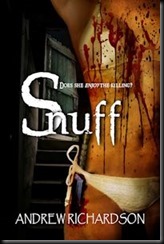
It’s been a very long wait, but ‘Snuff’ is finally published today. I penned the first draft ten or more years ago, but it took me many years and rewritings to get it as I wanted it.
‘Snuff’ is my deepest ever journey into splatter. It’s about an archaeologist, Shauna Hegarty, who is kidnapped and forced to take part in snuff movies.
Thank you to Damnation Books for taking it on, to Dawne Dominique for the brilliant cover, to Kyle for his editing job, and Neil Evans and (in particular) Philip McCormac for commenting on early drafts.
Here’s the blurb:
Archaeologist Shauna Hegarty is looking forward to a working holiday in the Scottish Highlands, but events take a serious when Shauna and her friend Tessa are kidnapped by violent thugs while exploring underground. Their nightmare has only just started – the gang makes money by forcing women to kill each other for an audience. The prospect terrifies Shauna, until she is forced into the ‘arena’ with another woman. Then she has to come to terms with a terrifying concept of enjoying the killing.
And here’s the buy link.
Thursday 6 August 2015
Snuff: Background
 Time is flying at the moment; it’s less than four weeks to ‘Snuff’s’ release on September 1st. It’s my most brutal novel yet, and a few people have asked me why I’ve stepped out of my comfort zone of supernatural horror and historical fantasy to try splatter.
Time is flying at the moment; it’s less than four weeks to ‘Snuff’s’ release on September 1st. It’s my most brutal novel yet, and a few people have asked me why I’ve stepped out of my comfort zone of supernatural horror and historical fantasy to try splatter.
Many, many years ago (2001) I had a throwaway short story also called ‘Snuff’ published in a magazine called ‘Unhinged’ (Unhinged was published by a friend, Paul Lockey, who sadly I lost contact with years ago.) The story was about a young woman who is kidnapped to take part in fights to the death, and who gets a buzz from the fighting.
The story was well received – one reviewer thought it the best in the magazine – and the theme of a woman getting a thrill from being a ‘star’ of snuff movies was one I thought had potential. So, the full-blown novel was born.
My background is in archaeology and most of my novels have an archaeology or history angle. ‘Snuff’ is no different, in that the main characters are archaeologists. The site headquarters are loosely based on a dig I went on at Whithorn as an undergraduate.
I wrote the novel many years ago – it was my third, behind ‘Andraste’s Blade’ and an unpublished story about Ancient Britons. It’s not taken this long to get published because of any problems I’m aware of with it, but because of its brutality. Sex and violence are necessary to the story, and both needed to be shown without pulling any punches, otherwise the novel would be diluted and less hard-hitting than it needs to be to work. It’s taken me many redrafts over several years to get the sex and violence at the right sort of level. I particularly wanted them to be secondary to the plot and characterisation.
Overall I’m very happy with the way ‘Snuff’ turned out.
The novel will be published on 1 September by Damnation Books.
Monday 29 June 2015
‘The Footholder’s Tale’: Update

So, I thought I would put everything connected with publication and its aftermath in one place.
PREVIEWS
Carole Ann Moleti and Carl Alves kindly hosted previews and/or background information on the story or its main characters.
INTERVIEWS
I had a couple of pre-arranged interviews for around the time of as ‘Footy’s’ release. That fortunate coincidence gave me the opportunity not only to talk about the book and its coming about, but also other writing-related stuff. Thank you to Sonnet O’Dell and Suzie at Book Nook Diva for wanting to find out a bit about me!
REVIEWS
Since release, a handful of reviews have popped up, all giving ‘Footy’ four or five stars (out of five)
Here’s a reminder of the blurb:
Math, King of Gwynedd will die without a maiden’s magic to soothe his battle-injured foot. In a court rife with envy, greed and cunning, Math must choose a successor. His nephew falls in love with the beautiful new Footholder and he and his scheming brother plot to win her and at the same time ruin her – a plan which could mean the king’s death. Will the maiden’s bonding with the king cost her life or can she overcome treachery and save both king and kingdom from being torn apart?
Set in mythical Wales, The Footholder’s Tale, Andrew Richardson’s historical fantasy captures the mystical elements of the times and combines intrigue and classic romance, based on Gaelic legends.
‘The Footholder’s Tale’, published by Rebel ePublishers, is available both in print and electronically from Amazon: http://www.amazon.co.uk/dp/0692458301
Monday 22 June 2015
‘Snuff’ Cover and Release
I’ve heard from Damnation Books that ‘Snuff’ is scheduled for release on 1 September.
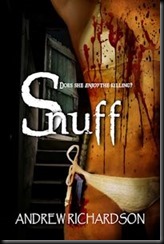 I’ve also had the cover art. As with all my Eternal Press/Damnation Books covers, this has been done by the award winning and brilliant Dawné Dominique. As usual, Dawné has produced a belter. ‘Snuff’ is the most brutal story I’ve written; the cover is hard-hitting and pulls no punches in its reflection of the story.
I’ve also had the cover art. As with all my Eternal Press/Damnation Books covers, this has been done by the award winning and brilliant Dawné Dominique. As usual, Dawné has produced a belter. ‘Snuff’ is the most brutal story I’ve written; the cover is hard-hitting and pulls no punches in its reflection of the story.
As a reminder, ‘Snuff’ is about two archaeologists who are kidnapped and forced to take part in fights to the death for a paying audience. I wrote the first draft many years ago, but it took several rewrites for me be happy that the sex and violence is in context and only secondary to the plot, before sending it to Damnation Books.
At the moment, ‘Snuff’ is with me for its final round of edits.
Tuesday 16 June 2015
‘Eton Mess’ – Cover

Like ‘Art Class’, ‘Eton Mess’ is an erotic novelette featuring my two favourite PhD students, Kerry-Jane and Amy. In this story, the friends go out for a meal and enjoy the contents of the sweet trolley a bit too much.
The release date is to be confirmed.
Sunday 24 May 2015
‘The Footholder’s Tale’: Release and Cover
Jayne at Rebel ePublishers has told me ‘The Footholder’s Tale’  will be released on Friday, 5 June.
will be released on Friday, 5 June.
I’ve also just received the final version of the cover, which I love – it’s the sort of stunning scenery my wife and I yomp over in north Wales whenever we can. It’s also highly evocative of the story’s feel.
As a reminder, ‘The Footholder’s Tale’ is a retelling of an old Welsh story about a king who must keep his foot in a maiden’s lap. Despite the unusual premise, it’s a wonderful fantasy tale of power, love, war and the like, and is easily my favourite traditional story.
‘The Footholder’s Tale’ will be available electronically from Rebel ePublishers and, I understand, in paperback from Amazon.
Saturday 9 May 2015
Review: ‘Covenant’, by John Everson
Anyone who read my review of John Everson’s ‘The 13th’ will know how much I enjoyed discovering the works of a talented horror writer I’d not come across before. I gave ‘The 13th’ five out of five.
So, it was with enthusiasm that I tore into ‘Covenant’.
Like ‘The 13th’, and apparently like Everson’s other works, ‘Covenant’ doesn’t hold back on the sex or violence. Like ‘The 13th’, though, I thought the darker side of life is secondary to the exquisite characterisation. Joe and the various people he meets all come over as fully rounded characters with complete personalities. It was reading about these people that really drew me into the book.
The plot is fine and consistent and works. The premise is about a sleepy town that has its share of suicides – all teenagers leaping to their deaths over the local cliff. Newcomer Joe finds himself investigating, and puts himself and other residents in danger in a story laced with blood and supernatural horror. Perhaps the violence is a little gratuitous, but that added to the tension and didn’t take away my enjoyment of the book.
This was a compelling read, and another five out of five. I will be trying out another Everson soon.
Tuesday 28 April 2015
Acceptance: ‘Operation Trench’
I’m delighted to announce another acceptance. ‘Operation Trench’ is a time travel novel about modern politicians who send undesirables back a hundred years to boost the British manpower shortage toward the end of World War One.
This is my first venture into both science fiction and World War One, and it’s a story I’m very pleased with.
As usual I’ll not name the publisher until everything is formalised in case something goes wrong or one party has to back out before contracts are signed. However, it’s a publisher I’ve worked with before and who I’m very happy to be with again.
The novel is likely to see print in 2016.
‘Operation Trench’ is set partly in a university’s archaeology department. That let me have some fun by including my favourite fictional PhD students – Kerry-Jane and Amy – who starred in my erotic novelette, ‘Art Class’. Both also appear in the forthcoming follow-up, ‘Eton Mess’. Although their roles in ‘Operation Trench’ are strictly non-erotic, it helped the writing to include characters I know and enjoy working with.
Many thanks to Charlie Hotchkiss and, as usual, Philip McCormac who read and made suggestions on early drafts. Thank you also to Peter Richardson, who advised on some of the scientific aspects.
Sunday 5 April 2015
An Update
- I’ve had initial contact about editing for both ‘Snuff’ (a violent horror hovel) and ‘Eton Mess’ (an erotic novelette), so they’re going through the process;
- ‘Dana’s Children’ (a violent horror novel) has been through the editing process and is in the final stage of proofing;
- ‘The Footholder’s Tale’ is currently being edited.
In other news, I’ve sent my time travelling World War One science fiction story to a couple of publishers. I’m still waiting to hear back, but it’s a story I’m happy with and I’m hopeful of a bite.
The current work in progress, like ‘Andraste’s Blade’ ‘The Doe and the Dragon’ and ‘The Footholder’s Tale’ is a story set in Celtic north Wales, around the region’s myths and legends. It’s about a man who marries a fairy. The original story is flawed, with some highly improbably elements so I’m describing this as ‘based on…’ rather than ‘a retelling of…’ type story. The overlying plot, though, is great fun and I’m enjoying the challenge of writing some ‘straight’ historical fantasy and leaving horror completely behind. That’s something I don’t do often enough.
Wednesday 1 April 2015
‘The Footholder’s Tale’
After some (well, actually quite a few) exchanges of E-Mails, we’ve decided on ‘The Footholder’s Tale’. I’m no marketing expert, but from my angle I like that title because I think it brings over the feel I tried to achieve with the story.
I still think of it by the working title I gave it, ‘Footy’. Rebel ePublishers declined to use that, probably rightly(!)
‘The Footholder’s Tale’ is going through the last stages of editing at the moment, so I hope it won’t be long before I can announce a release date.
As a reminder, the story is a retelling of a traditional Welsh tale about a king who must keep his foot in a maiden’s lap. Despite the odd premise, it’s a beautiful story of love, war, betrayal and power. It is easily my favourite traditional story, and I can only hope my retelling does it justice.
Tuesday 17 March 2015
Six (Yes, SIX!) Computer Screens
A written obituary to genius Sir Terry Pratchett (RIP) shows him at his desk. What stood out to me was that he worked with six (yes, SIX!) different computer screens, in two rows of three in front of him.
A while ago I invested in the biggest wide screen monitor my budget would allow, so I can have two pages of my current chapter open alongside the novel’s Excel ‘Mastersheet’. But, I’m struggling to see the use I would get from six (yes, SIX!) screens – even if I could fit them on my desk (below). I do appreciate that Sir Terry was professional and wrote books in series which gives more need for record keeping, but even so I’m struggling.
It did get me thinking, though, and into discussion with the household’s non-writers. If I had the space, budget, and inclination for six (yes, SIX!) computer screens, what would I use them all for? Here are my thoughts, and I’d be interested in suggestions from other writers.
- The document I’m currently working on, straight ahead and in front of me, which probably goes without saying. For me, that will be the current chapter of the novel I’m drafting;
- My ‘Master Spreadsheet’. I have an Excel file for each novel with a summary of each chapter and links to each key document such as my character list, and other documents I need for the story, for example who is wearing what in each chapter, or who has what in their pockets or rucksack etc;
- Character sheet. Depending on the complexity and number of characters this can be a Word document of a couple of pages in total briefly outlining each character, to a multi-page spreadsheet with thirty or forty lines of information on each character – looks, age, relationships, religion, phobias, background and the like. Maybe I would make use of this on screen - at the moment they’re run off on hardcopy for ease of reference, but I keep changing or adding to them as I find out more about the characters;
- Story summary. I have a brief outline with a couple of paragraphs for each chapter, to remind me what needs to happen when and tends to be rewritten several times as I go along;
- Internet. Sometimes I need a bit of factual information – what flowers bloom in early spring in north Wales, for example – and Wikipedia and similar sites are my friend (and yes, I do know the pitfalls of such sites!);
- I can’t think of what I’d use a sixth screen for! (Maybe, if I was more inclined, social media, which writers seem to live by these days?) But, Pratchett probably had a lot more information than me to keep track of. And, of course, I can’t argue with a genius!
Monday 2 March 2015
Meet the Characters –‘The Well’
‘The Well’ has been around for a while - it hit the world in 2012.
 It’s a story I’m very pleased with; I was particularly happy with the story’s four main characters. For those of you who haven’t read it (and a reminder for those of you who have), it’s about a beautiful heiress who wakes from a drugged sleep at the bottom of a dried-up well in the American desert.
It’s a story I’m very pleased with; I was particularly happy with the story’s four main characters. For those of you who haven’t read it (and a reminder for those of you who have), it’s about a beautiful heiress who wakes from a drugged sleep at the bottom of a dried-up well in the American desert.
Here’s a brief resume of who’s who:
Constance ‘Connie’ Straker
Connie Straker is an outstandingly beautiful college student. She is also the daughter of a millionaire burger chain owner. Connie has an apparent self-confidence and maturity that some might describe as ‘feisty’. That is just a front, though, to cover some of the typical hang-ups of early adulthood – concerns about her looks, whether she is only popular for her money, and so on. She has phobias of heights and dark, enclosed spaces.
Connie’s constant companion and ‘best friend’ is ‘Pocca,’ a battered key ring in the shape of Pocahontas.
Julian ‘Spongehead’ Atkinson
Julian knows he isn’t cool. He accepts that with his acne, mop of curly hair (hence the nickname ‘Spongehead’), and poor social skills, he will never win a popularity contest. He usually takes the bullying on the chin, but his bitterness sometimes boils under the surface to give the potential for instability.
Julian has always had a thing for Connie, and used to cast her furtive glances at school. His affection wasn’t returned.
Malcolm ‘Mal’ Maloney
The older of two brothers. He thinks of himself as the brains of the two, but what he likes to think of as intelligence is in reality a mixture of single-mindedness and bullying. He is reasonably good looking, but living the life of a bum in a desert shack with his brother keeps romantic opportunities to a minimum.
Mal has a grudge against Connie’s family, which forms the basis of ‘The Well’.
Jed Mahoney
Mal’s younger brother. He isn’t bright, and is overweight. He relies in his brother to organise his life, and in return is loyal to Mal. He doesn’t mind his shortcomings because he is content with life, as long as he has his brother to look after him.
‘The Well’ is available on Amazon.
Sunday 22 February 2015
Writing the Slasher
I’ve seen a lot of violent horror movies in my time, in which a group of people get slowly whittled down to a last surviving character. ‘Alien’ and ‘Predator’ are two better known mainstream examples, while in literature Agatha Christie’s ‘And Then There Were None’ is a famous, if less gory, take on the theme.
I’ve had several ‘slasher’ novels and novellas published: ‘The Wood’, ‘The Well’, ‘The Torridon Witches’, and my forthcoming ‘Snuff’ and ‘Dana’s Children’. So, I like to think I know a little about the genre and the elements needed in a violent story.
I used to think writing a story where the main aim is to bump of characters one by one, in the most grizzly manner possible, would be easy. But, as the plot is simple and predictable I’ve found these stories among the most difficult to write. Knowing the sort of thing to expect makes it difficult to keep readers interested.
So, what do slashers need to be successful, considering the plot is predictable? There is a lot to work into a violent story, but I think there are three main elements:
Characters. The reader must care about the characters, meaning they must be particularly well drawn – although the genre does allow for the earlier casualties to be a little one-dimensional. There is also a need for group dynamics – for example, who gets on well with who? What groups conflicts will stop the characters focussing on the enemy? What are the likely alliances within the group? These and other questions help add depth to what is likely to be a shallow plot. Which character will remain strong, and pull the group together? That character will probably be the most important and main viewpoint, and so will likely survive until the end. Think Ripley in ‘Alien’.
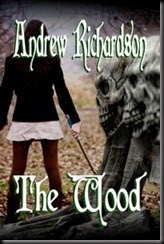 Setting. Although the setting is in some ways just ‘fluff’, I think it’s important in setting the story’s mood. Personally, I don’t like these books or films set in places like deserted lunatic asylums or industrial wastelands or where the killer is simply an escaped madman because they’ve all been done several times before. That’s why I was particularly pleased with ‘The Wood’. I know I’m biased, but at the time I thought setting a slasher in a mythical world, and making the bad guys mythical creatures, would seem different to publishers and readers.
Setting. Although the setting is in some ways just ‘fluff’, I think it’s important in setting the story’s mood. Personally, I don’t like these books or films set in places like deserted lunatic asylums or industrial wastelands or where the killer is simply an escaped madman because they’ve all been done several times before. That’s why I was particularly pleased with ‘The Wood’. I know I’m biased, but at the time I thought setting a slasher in a mythical world, and making the bad guys mythical creatures, would seem different to publishers and readers.
Resolution. By this I mean the ending, which will normally be along the lines of the last surviving character facing and overcoming the killer, whether it be a monster, or madman, or something different. To keep the story fresh and to satisfy the reader I think an ending should be more than just a fight. There needs to be something imaginative like a twist – although that is probably good advice for any book, in any genre.
Of course, there is more to think about but a short blog piece isn’t the place to go into the minutiae of storytelling technique.
So, there are my brief thoughts on why writing violent horror is more than just lining up a group of poor unfortunates for the slaughter.
Sunday 1 February 2015
Female Viewpoint
My regular readers will know I use female characters a lot. Not exclusively, but more often – and certainly in preference to – men.
One of the nicest things a critiquer ever said to me is that she had assumed I was a female writer, because I understand how women think. (To be honest, how women think is something I’m very good at NOT understanding, but that’s a tangent I’ll not go down…)
Someone recently asked me why I prefer using female viewpoint to male. I thought it would make a good blog topic, so here goes…
I’d never been comfortable with male characters, although for me it naturally started off as the obvious one to use. Male heroes in speculative fiction ‘have’ to be strong, single-minded all action figures. That’s not me at all – I’m much more boy next door than Conan the Barbarian.
No matter how hard I try, my male leads end up like me. That might be fine for other genres, but it doesn’t work for Celtic warriors in my historical fiction – although for Prince Einion in ‘The Doe and the Dragon’ I deliberately made this a character flaw that played a role in the story. The same in my forthcoming ‘Footholder’: Prince Einion is a skilled administrator and peacemaker. In contrast, his brother is a violent thug and the characters ‘bounce’ off each other.
So, female viewpoint…
I first tried it seriously for a short (‘Snuff’, in ‘Unhinged’ issue 6). The story wouldn’t have worked without a female lead, and to my surprise I found it easy (or should that be less difficult?) to do.
In fact, when I have both male and female leads in a story, any critiquers’ concerns about characterisation will usually relate to my male character and not the female.
So, why?
(Sexism alert…) I think it’s because a female lead can get away with thinking her way out of a problem, rather than going in with all guns blazing. That’s more me, too. There are exceptions, of course (Xena; Ripley in ‘Alien’) but in general a female lead doesn’t have to be gung-ho and all-action.
The many females used by my writing hero, Richard Laymon, manage to retain an ordinariness – and dare I say likeability - that probably wouldn’t be strong enough in a male lead. I think my main characters follow Laymon’s pattern, and so for me female viewpoint characters work better than male.
Monday 12 January 2015
Film Review: ‘The Wicker Man’
Despite its fame and reputation, I’d never seen either the 1973 British original, or the 2006 Hollywood remake of ‘The Wicker Man’.
I’ve put that right over the last month, having finally got around to getting a copy of the Hollywood version over the Christmas break. According to reviews this is the weaker of the two films, but I think it’s still worth a watch.
The general premise just about stands together if you can suspend belief a little, although the plot itself has more holes than a sieve. I was able to ignore that, and the clichéd dialogue, and the unintentional humour (which reviewers also picked up on), to sit back and simply enjoy it.
A lot of horror staples are thrown in – some unnecessarily and without adding to the plot – such as ravens turning up unexpected and unannounced, and the stereotypically unfriendly locals. That just added to the fun, though.
The film isn’t particularly scary, although the suspense and climax place it firmly in the horror genre. Because of the lack of scares, and because it throws in a lot of horror elements, this film might be a good, gentle introduction for anyone wanting to try horror for the first time, but who is scared of being…well…scared.
I give ‘The Wicker Man’ (Hollywood version) three out of five.



